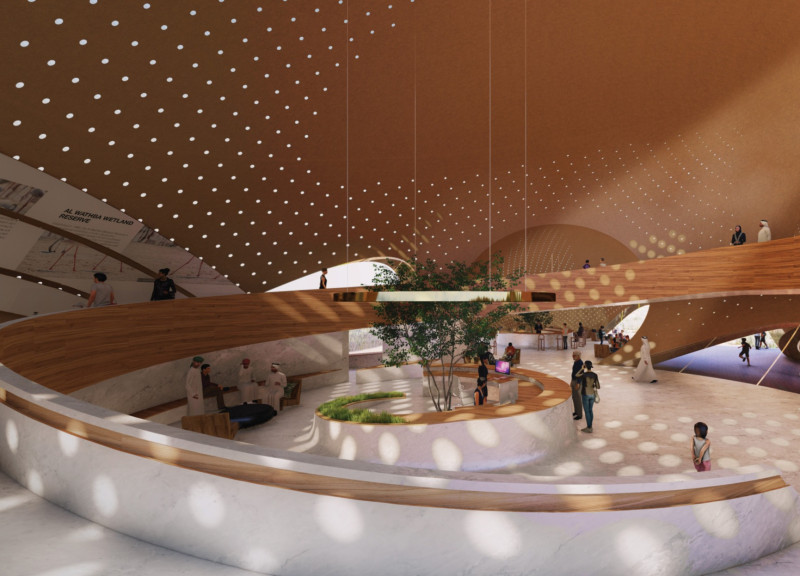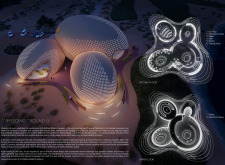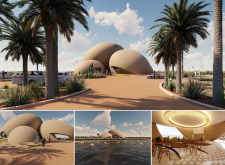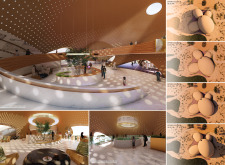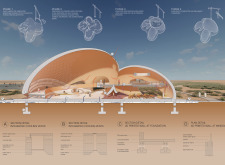5 key facts about this project
The primary function of the "Breeding Ground" project revolves around its role as an educational hub and visitor center, offering information on local wildlife and conservation efforts. The building is strategically designed to facilitate various activities, including an information center, a café, exhibition spaces, and training facilities for workshops. These design elements not only cater to visitors but also support the ongoing research initiatives aimed at studying and preserving the flamingo population and its habitat.
One of the distinguishing aspects of this architectural project is its inspiration drawn from the biological forms found in nature. The building's organic shapes resemble eggs, symbolizing the nurturing aspect of the breeding grounds, while also contributing to a visually engaging landscape. This biomimetic approach fosters a harmonious relationship between architecture and its natural surroundings, allowing for a user experience that is both educational and aesthetically pleasing.
The material selection within the design is representative of a commitment to sustainability. The use of 3D printed concrete offers a contemporary method of construction that not only enhances durability but also allows for intricate geometric forms that traditional methods may not achieve. Additionally, glass elements have been incorporated to promote natural daylighting, providing energy efficiency while connecting visitors visually to the wetland environment. Wood is used throughout the interior spaces, adding warmth and tactile quality, while aluminum frames serve structural functions, ensuring thermal efficiency and resilience.
The design addresses environmental challenges through natural cooling strategies, leveraging passive ventilation to create comfortable indoor conditions despite the exterior climate. Perforated facades allow light to filter within, producing dynamic shadow patterns and reducing reliance on artificial lighting.
The project stands out due to its focus on community integration and environmental education, providing a dedicated space for visitors to learn about and engage with the surrounding ecosystem. The design encourages interaction with the habitat it serves, enhancing awareness of the significance of wetland conservation.
To gain deeper insights into the architectural plans, architectural sections, architectural designs, and overall architectural ideas related to the "Breeding Ground" project, readers are encouraged to explore the full project presentation for a comprehensive understanding of its elements and objectives.


